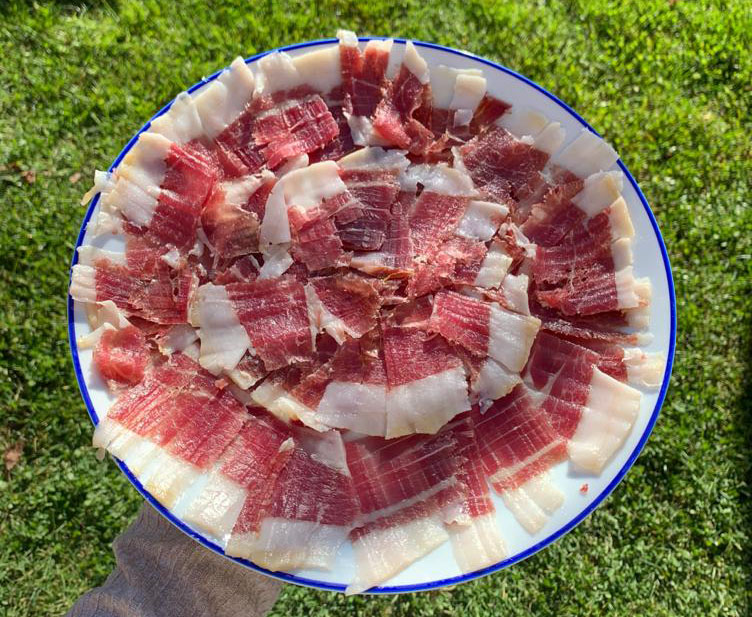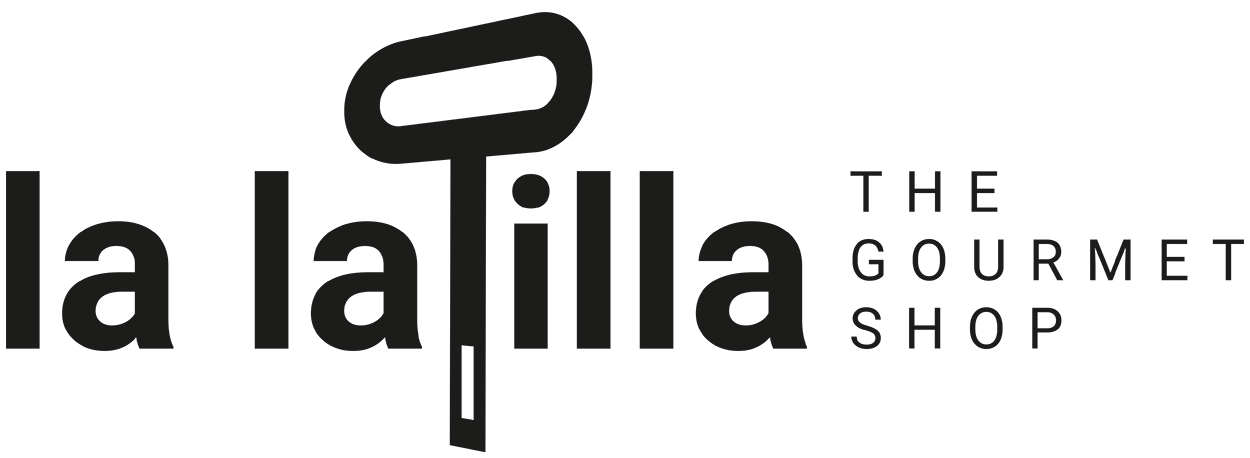Professional ham cutting is an art that requires skill and technique. Here we provide you with information about the ritual of professional ham cutting:
Professional ham cutting ritual
Ham choice: To obtain a good ham, it is important to choose a quality one. Hams must be properly cured and must have been stored correctly to preserve their flavor and texture.
The correct position: The ham should be placed on the cutting support, with the hoof facing up and the widest part facing down. It is important to ensure that the ham is well supported and does not move during cutting.
The knife: The knife is an essential tool for professional ham cutting. It should be long and flexible, with a thin, sharp blade to obtain precise and uniform cuts.
The first cut: To start the cut, you must make a V-shaped cut in the widest part of the ham. This cut is made to create a flat surface on which the ham can rest and make uniform cuts.
The cutting technique: The cutting technique consists of making thin, uniform cuts in the ham, always keeping the knife at a 45-degree angle. The cuts should be straight and precise, and should not be too deep to avoid breaking the slice.
The cutting order: Cutting the ham must be done in a specific order. First the club is cut, followed by the counter-mace and, finally, the tip. Each part of the ham has a different flavor and texture, so it is important to respect the cutting order.
The presentation: Once all the slices of ham have been cut, it is important to present them properly. The slices should be placed on a large, flat plate, fat side down and forming a fan.
We leave you 5 tips to cut ham at home

- Use a good knife: Make sure you have a long, sharp knife with a flexible blade that allows you to cut the ham precisely. A good knife will make the job easier and allow you to make finer cuts.
- Start at the widest part: Start cutting at the widest part of the ham, which is easier to handle. Place the ham on a support so that it does not move and make thin cuts in the direction of the hip.
- Create a flat surface: So that you can cut the ham evenly, it is important to create a flat surface. To do this, cut a small slice of the ham on the opposite side to the one you are cutting.
- Cut at an angle: Hold the knife at an angle of about 45 degrees and make thin, straight cuts. Avoid making zigzag cuts, as this can cause the ham to lose its flavor and texture.
- Don't waste anything: Use all the ham and don't waste anything. After cutting the slices, you can use the leftover pieces to make broths or to add flavor to your dishes. Also, don't forget to clean the knife and holder well after use.
Do you identify when a ham is 100 acorn-fed Iberian ham?
Based on the diet that the animal receives, we can identify three types of Iberian ham.
- De Bellota, during the montanera period the animal has only consumed acorns, herbs and other fruits from the pasture
- For Cebo de campo, the animal has been in the field in freedom feeding on feed from cereals, herbs and fruits
- As bait, in this case the animal has only been fed feed made with cereals and legumes.
Do you know the 100% Duroc breed ham?
Duroc is one of the many breeds of pig that exist and 100% is the degree of racial purity of each specimen. The origin of this breed is North American, although it is currently one of the most produced pigs in Europe and more specifically in Spain.
Currently, the Duroc is one of the most used pigs in the production of ham, both for crosses with other white-coated pigs and for crosses with Iberian pigs. On our website we have this available Duroc Batallé Gran Reserva Ham to enjoy an extraordinary Duroc 100% ham.
Some characteristics of this breed are:
- It is a reddish-colored pig covered with relatively long fur and larger in size than the Iberian pig. Adult specimens usually weigh around 350 kg.
- They have black hoofs. This only occurs when they are pure 100% or crossed with Iberian breed pigs.
- Feeding and breeding are usually carried out intensively in closed livestock farms and feed.


